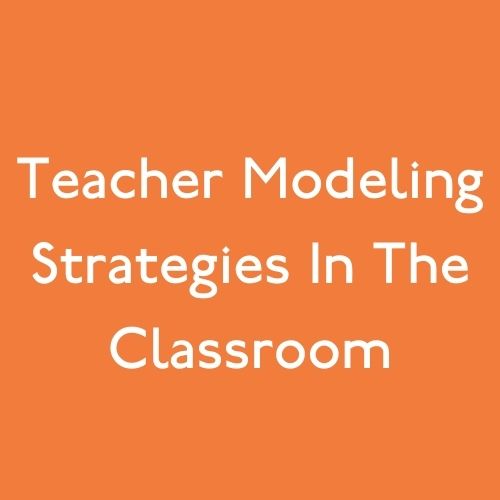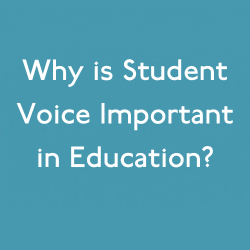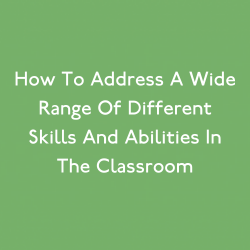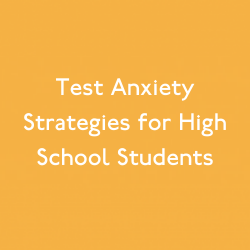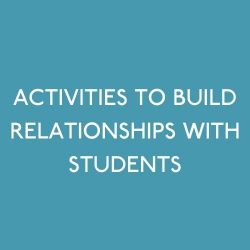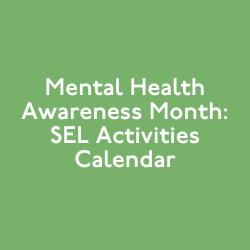Classroom instruction has changed drastically over the last 20 years, not to mention the rapid changes that have taken place during the shift to remote learning and continued adaptation to the COVID-19 pandemic. But one of the most tried and true instructional approaches still maintains its impact, and is especially powerful when used in social emotional learning instruction. Teacher modeling for students can be an interactive, engaging demonstration of the skills and techniques that we want students to practice.
Our brains are developed to learn through observation. Mirror neurons give us the ability to watch someone perform a task and repeat, or mirror, it back. Modeling not only taps into how our brain learns, but it strengthens mirror neurons to help students become better learners over time. This doesn’t just apply to math or science, but social emotional skills too! Mirroring, or repeating, facial expressions or body language is a powerful way to develop kinesthetic empathy.
What is Teacher Modeling?
Teacher modeling is achieved through demonstrations and narrations. The teacher may specifically show the student how to complete an activity or narrate their actions to provide insights into the type of thought processes that go into completing different tasks and activities.
Why is Teacher Modeling Important?
Teacher modeling is much more than a teacher demonstrating while students observe. The students are very much involved in all aspects of what the teacher is doing, including the thought processes that lead to the necessary actions to complete a task. Students are able to physically see and take part in the activity being completed which gives them a better understanding of how to do it themselves.
Modeling Strategies for Effective and Efficient Teaching
Over time, teachers develop their own approach and style to modeling, but there are several different teacher modeling examples that you can start to incorporate into your classroom. For example, narration is a great way to model your thinking for students. Whether you’re modeling a writing skill or an emotional management strategy, thinking out loud and narrating your actions give students insight into the kinds of thinking and steps they’ll need to take when working independently. This kind of modeling doesn’t have to happen face-to-face, either! Another way teacher modeling example uses video that students can revisit as needed. Teachers can also use sentence starters or language frames to help model or guide the kinds of questions students can ask themselves or each other as they work.
What is interactive modeling?
Interactive modeling more deeply engages students in the experience of witnessing a demonstration of a skill, and is especially impactful when practicing social emotional skills. Unlike traditional modeling, interactive modeling engages students in the experience of observation. The teacher may still narrate some of their internal thinking, but instead of pointing out what students should be looking for or doing at each step, they may ask students questions like “What did you notice?” Allowing students to actively make observations, notice cause-and-effect, and ask questions creates an interactive experience.
Inviting students to model for each other is another step of interactive modeling. Teachers can prompt students to make observations and ask questions, exactly as if the teacher was modeling the skill. Unlike a more traditional “I do, We do, You do” instructional approach, interactive modeling continues to leverage observation and discussion as more students practice and model the skill. There’s an important distinction between practice and modeling, too. Practice is often done more privately, but students often learn more by “teaching” – modeling or demonstrating a skill for others – than they do when simply practicing a skill for themselves. Invite a student to model for the class, then invite students to model in small groups, and finally visit each group and have all students model the skill for you. Modeling requires them to narrate their thinking, naming specific actions, and invites questions from others to deepen their thinking as they work.
What is traditional modeling?
Traditional modeling continues to be a powerful way that students learn. SEL resources for teachers can include some of these questions to better support teacher modeling of social emotional skills. Verbal narration is one of the easiest ways to start modeling for students, but it’s important to remember to not just narrate the steps you’re taking but your thinking as well. Do you encounter a challenge or an obstacle? Narrate what that feels like and how to move past it in order to stay focused.
For example, when modeling a math strategy, the teacher may choose to model a common error that students make, narrating the thinking that prompted the error and then realizing the error. Modeling emotional management could mean narrating that internal experience, “I get so frustrated when I make that kind of mistake, and when I get frustrated I want to move faster and I know that can lead to more mistakes. Let me take a breath and then try this again.” Students need to know that it’s okay to make mistakes as we learn – that’s often when the learning happens – and modeling thought patterns that reflect a growth mindset can inspire and deeply impact students.
How does interactive modeling differ from traditional modeling?
There are slight differences between traditional modeling and interactive modeling. Most importantly, students are active participants in interactive modeling instead of passive observers. Traditional modeling features the teacher dictating the steps and internal thinking of a skill – what to do, what to notice, how to respond to certain circumstances – with the expectation that students absorb the teacher’s thinking and practice it themselves when they have an opportunity to practice the skill. Interactive modeling, however, involves students as active observers. Students are invited to ask questions, make observations, and practice modeling for each other. Interactive modeling doesn’t just focus on the skill itself, either, but helps students understand why the skill is important as well as when and how to use it.
Teachers looking to model social emotional skills more prominently in the classroom can find SEL resources for teachers to support daily instruction in our free Mental Health Resources Toolkit.
The Nation’s Leading SEL Company
Move This World is the leading provider of social emotional learning (SEL) multimedia experiences for students, teachers, and families. Our SEL programs are customized for PreK-12 students and are delivered through short interactive lessons with the goal of empowering students to navigate the rapidly-changing realities of their world – both in the classroom and throughout their lives. The impactful yet simple Move This World SEL curriculum allows educators and families to incorporate Social Emotional Learning into their schedules every day, without planning or prep.
Contact us to learn more about SEL Grants and bringing Social Emotional Learning to your classroom.
Related links:
